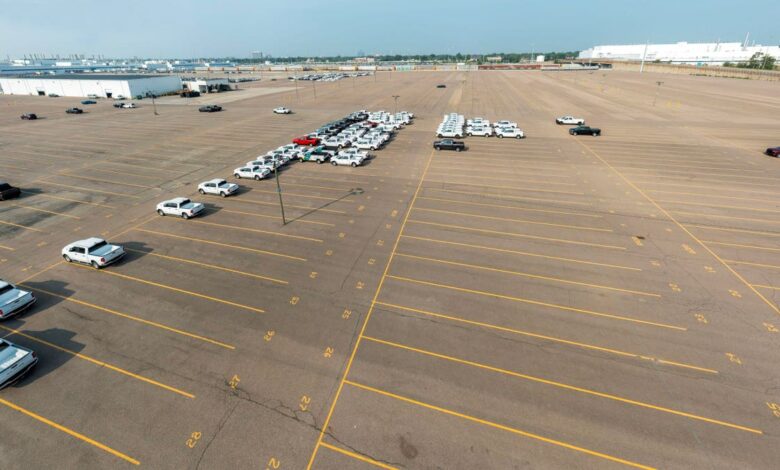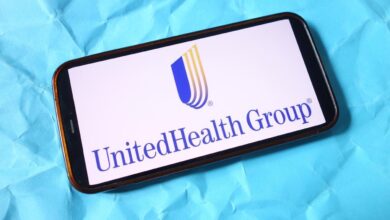How The Knowledge Economy Factory Broke Down

📝 usncan Note: How The Knowledge Economy Factory Broke Down
Disclaimer: This content has been prepared based on currently trending topics to increase your awareness.
As someone who has spent decades analyzing manufacturing systems, I see higher education not as a cathedral of learning but as a factory—a factory that has lost control of its own assembly line.
In advanced manufacturing, survival depends on precision, modularity, and relentless quality control. Universities, by contrast, are still running on a Model T playbook: “Any major, as long as it takes four years.” The result is an industry drifting toward obsolescence—and the data proves it.
Detroit, Michigan, A mostly empty parking lot at Stellantis’ Jefferson North Assembly Plant. After a year of sharply declining sales and profits, the multinational company is hoping that new CEO Antonio Filosa can lead a turnaround. (Photo by: Jim West/UCG/Universal Images Group via Getty Images)
UCG/Universal Images Group via Getty Images
The Inputs and Processes Are Broken
Universities still sort students by standardized tests designed for a different economy, like manufacturers using 1950s quality metrics for 21st-century products. Meanwhile, the international student pipeline—representing $45 billion in annual revenue—faces severe supply chain disruption as China’s demographics shift and regulatory crackdowns reduce outbound students by 30% since 2020.
Fifteen-week semesters in an agile world look increasingly obsolete. More damaging: studies tracking 2,300 students across multiple institutions found 45% showed no improvement in critical thinking after two years, and 36% showed no improvement after four years. That’s a 40% defect rate graduating into the workforce.
Grade inflation has reached crisis levels—the average GPA has risen from 2.3 in the 1930s to 3.1 today, with “A” grades comprising nearly 40% of all marks at four-year colleges. In manufacturing terms, this is the equivalent of relaxing quality standards while claiming improved performance.
The Disruptors Are Scaling
In manufacturing, competitors with lower cost, higher flexibility, and better outcomes eventually win. The same logic now threatens higher education. While college costs have increased 1,200% since 1980 (outpacing healthcare and housing), alternatives are emerging. Lambda School’s income-share model demonstrated market appetite for outcome-based pricing, despite execution challenges.
Multiple groups of college students sit together at tables in the Milton S Eisenhower Library at Johns Hopkins University, studying from notebooks and laptops, with water bottles and papers scattered across the tables, Baltimore, Maryland, 2014. Courtesy Eric Chen. (Photo by JHU Sheridan Libraries/Gado/Getty Images).
Getty Images
The Manufacturing Turnaround Playbook
Successful manufacturing turnarounds follow proven principles—what I call an “augmented lean” approach, further developed with Natan Linder in our 2022 Fast Company analysis as well as in book format: modularize products, automate routine processes, rebuild supply chains, and enforce quality metrics. Higher education needs the same discipline.
Modularize the Product Line
Replace monolithic degrees with stackable credentials that combine like manufacturing components. The new learning architecture must focus on mastery, judgment, ethics, navigation of complex systems, gigascale problem-solving, and orchestration across disciplines—not just standardized test performance. Students could assemble data science skills with communication expertise, creating analytical storytellers for the modern economy. Arizona State University’s partnership with Starbucks demonstrates how modular, online education can serve working professionals at scale.
Automate Low-Value Processes
Use AI for grading, routine instruction, and administrative tasks—freeing faculty for high-value mentorship and applied problem-solving. But without governance, AI risks undermining trust. Emerging tools that certify learning provenance and ensure privacy-preserving analytics are critical guardrails. Carnegie Mellon’s Open Learning Initiative shows how adaptive learning systems can personalize instruction while tracking detailed learning analytics.
Rebuild the Supply Chain
Forge genuine corporate partnerships where credentialing integrates with industry platforms. Siemens’ apprenticeship programs combine education with immediate workplace application, creating direct pathways from learning to employment.
Institute Real Quality Assurance
Publish actual learning outcomes, not just graduation rates—and verify their integrity. Modern systems can prove who did the work and how, establishing provenance the way third-party verification now makes possible. Shift tenure toward teaching innovators who can demonstrate measurable student progress, not just research output. Western Governors University’s competency-based model requires students to demonstrate mastery before advancing—like quality gates in manufacturing.
circa 1925: The final iron being given to shirts in a New York textile factory. (Photo by Hulton Archive/Getty Images)
Getty Images
The Detroit Moment
In advanced manufacturing, the rule is simple: disrupt yourself before someone else does. Higher education’s current trajectory echoes Detroit in the 1970s—confident, dominant, but blind to quality erosion and emerging competition.
Universities that fail to retool will follow the path of shuttered factories—once-proud institutions reduced to cautionary tales. A recent survey found that 43% of jobs requiring bachelor’s degrees could be performed by workers with alternative credentials.
The workforce of the future—what my upcoming book calls the “platinum workforce”—will require entirely new skill combinations that traditional higher education cannot deliver through current structures. The blueprint exists. The urgency is real. The only question is whether university leaders have the discipline to retool before students stop showing up at the factory gates.
Disclosure: The author is Chief Business Officer at Answerr Labs, which builds AI governance tools for education, Founder of the expert network Yegii, Inc., and a Venture Partner at Antler. He previously conducted research at MIT and Stanford.




